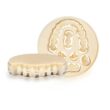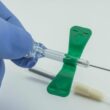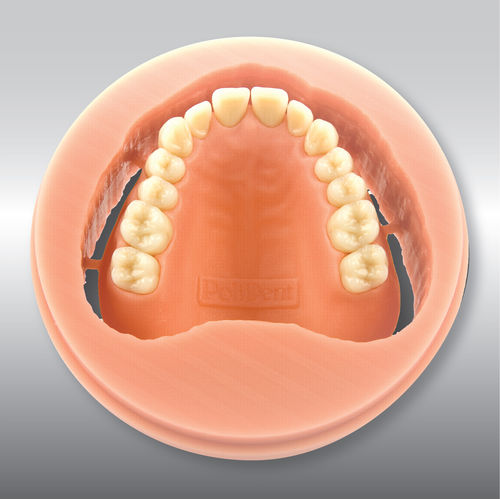How do two or more people, unknown to each other, work on the same problem and arrive at the same conclusion simultaneously? Quite often, each discoverer will accuse the other for copying his work whereas in reality each did not know that the other was working on the same project. There are many instances of such simultaneous discoveries.
British biologist, Sir Aleister Hardy thinks that animals develop a group mind and that all species might be linked by a cosmic mind to convey information through space. Rupert
Sheldrake, a biologist, agrees with Hardy. They quote instances of monkeys washing sweet potatoes to get rid of sand. First, monkeys on Koshima island practiced it. After a few months, monkeys on another island with no contact with the earlier ones, also developed the same habit. Sheldrake says that rats that have learned to run a maze transmit this knowledge to rats in other laboratories. How do they prove this theory? Their proof is that the rats in other laboratories learn the trick in a shorter period than they did previously.
He calls this concept “morphogenetic fields” and believes that this faculty is similar to the simultaneous discoveries several people make in different areas of the world but I believe the human mind is the link. Our mind transmits the information to rats in other labs through various venues including contact. When we see monkeys on one island, we think “why don’t those on the other island do the same thing?” and this information travels to the monkeys on the other island. The process is to hasten our progress from an earthly being of limited knowledge to a celestial being with wider knowledge. This progress has to come step by step. So, Nature searches for prepared minds and two or more persons become aware of a problem and work on it. The problem is solved independently and often simultaneously. Some examples are given below.
ELECTRONS
J.J. Thomson and Charles-Francois de Cisternay DuFay discovered electrons independently. DuFay thought that there were two kinds and called one vitreous electricity and the other
resinous electricity. (The English physician, William Gilbert, introduced the term electric from the Greek word “electron” for amber because amber would acquire a special character of
attracting or repelling metallic objects when it was rubbed over fur.)
AEROPLANE
The Wright brothers in America and Richard Peers in New Zealand at the same time developed the aeroplane. Richard Peers flew two years before the Wright brothers but he was a loner and never published. Wright brothers arrived at the same result without knowing the work of Peers.
JET ENGINE
The jet engine was developed simultaneously by a German engineer, Paul Schmidt, and by British engineer, Whittle, of the RAF college at Cranwell.
LIQUID FUELS
When Hermann Oberth was advising the German war lords about liquid fuel for long range missiles, Robert Goddard was working on similar fuels in America.
SPECTRAL LINES
Lord Kelvin in England and George Robert Kirchhoff in Germany discovered that each element produced its own spectral lines. Using this system, John Lockyer in England and Pierre Janssen in India identified, almost at the same time, the yellow spectral lines of helium in the sun.
RECEDING UNIVERSE
Edwin Hubble (1889-1950) in the U.S., Abbe Georges Lemaitre (1894-1966) in Belgium, and Willem Sitter (1872-1934) in Holland worked out the theory of the receding universe at the same time.
SATURN’S RINGS
Ring C around Saturn was discovered in 1850 by William C. Bond (1789-1859) of Harvard observatory and two weeks later, independently, by W.R. Davies in England.
NEPTUNE
In 1846, J.C. Adams, at Cambridge University and Urbain Joseph Leverrier (Luh-veh-ryay) at Ecole Polytechnique in Paris independently calculated the spot where Neptune would be found.
CYCLOTRON
Soviet Physicist Vladimir Isifovitch Veksler and Edwin Mattison McMillan in California independently devised “Synchronized Cyclotron” at the same time.
VIRAL MUTATION
Independently, Luria Salvadore Hershey discovered viral mutations.
NUCLEAR MAGNETIC RESONANCE
E.M.Purcell and Felix Bloch independently developed nuclear magnetic resonance (NMR) to study the interior of living organisms without damage to the tissues which X-rays would cause.
SEMI-MAGIC NUMBERS
J.H.D.Jensen and Gopper-Mayer independently discovered “semi-magic numbers” (stability of atoms containing 28 or 40 protons in shells).
CAT SCANNER
Godfrey Hounsfield, an electric engineer working for a prvate company in London, and Allan Cormack a Physicist, at Tufts University in Boston developed the catscanner (Computerized axial tomography) independently at the same time. When attached to a computer, it will scan and magnify a minute area and facilitate diagnosis of the condition. In October, 1979, the Nobel prize for inventing catscanner was awarded to these two scientists.
LIQUEFIED AIR
William Hampson in England and Karl von Linde in Germany independently liquefied air on a large scale in 1895.
CALCULUS
Both Newton and Leibnitz independently discovered calculus at the same time. However, Newton did not publish his work. He developed this system to calculate the gravitational force of the sun and to resolve the revolutionary elliptical paths of the planets. About 10 years later, when Leibnitz wrote to Newton, Newton replied saying that he had already worked out that system.
DARWIN AND WALLACE
Charles Darwin (1838) and Alfred Wallace (1848) worked independently on the theory of evolution. When Wallace was in Indonesia, he had an attack of malaria and decided to convey
without delay a thought that arose in his mind to Darwin. He drafted a letter and mailed it the next day. When Darwin read that letter, he was surprised to see that Wallace’s findings were very similar to his. (Darwin had not published his theory) In Wallace’s letter, Darwin saw confirmation of his own ideas, though Wallace was trying to convey his belief that an activity
of the spirit pervades the universe.
Hugo De Vries of Holland, Karl Erich Correns of Germany and Erich von Tschermak of Austria studied Mendelianism in plants without knowing that the other two were doing the same or that Mendel had done the work. In a final check of previous publications, all three came across Mendel’s paper. All three published in 1900, each citing Mendel’s paper and giving Mendel
full credit for the discovery, publishing his own work as confirmation.
TELEVISION
The fundamental principles of television were developed independently in Germany, England, France, Scotland, Russia, and the U.S. during the 1920’s. Sawyer in U.S. and Morris Leblanc in
France proposed a rapid scanning of a scene line by line to build up a picture. Baird in England and Jenkins in the U.S. independently succeeded in intercity transmission of an image.
ELECTRICAL INDUCTION
Joseph Henry (1823) in America and Michael Faraday (1831) in England independently found electrical induction. Each published within a few months of each other.
COMPTON EFFECT
Sir Chandrasekhara Venketaraman independently discovered the Compton effect (the light scattering effect of molecules) before Compton. This discovery helped in the study of molecular structure.
ELECTRIC LAMPS
Electric lamps with glowing filaments were developed independently by Sir Joseph W. Swan in Britain and Edison in America towards the close of the 1870s.
FITZGERALD CONTRACTION
Lorenz and Fitzgerald independently discovered the Fitzerald Contraction of objects due to speed. Michaelson and Morley did an experiment to decide if there is any difference in the velocity of light because of the earth’s motion. They failed to detect the difference because of an error in in their investigation. The error was the contraction due to speed . A foot length will become 6 inches if the ruler is travelling at a speed of 161,000miles /second. At the speed of light of 186282 the contraction will be full and the length will be zero in the direction of travel. Lorenz advanced the same theory independently. Hence, it is now known as Lorenz-Fitzgerald contraction.
RUBELLA VIRUS
Weller and coworkers at Harvard, Parkman and coworkers at Walter Reed Army Institute of Research in 1961, working independently reported isolation of Rubella virus and its
successful growth in cell cultures.
ANTHRAX BACILLUS
In 1870, Robert Koch in Germany and Pasteur in France independently discovered that a bacillus was the cause of anthrax.
MALARIA
Batista Grassi in Italy and Ronald Ross in Calcutta worked out the life history of the malarial parasite at the same time.
RAYON
Bernigaud Chardonnet in France and Sir Joseph Wilson Swan in England patented the same process of developing rayon within a few months of each other.
PHOTOGRAPHY
Dagueirre in France and Talbot in England independently developed the principle of photography
PERIODIC TABLE
Julius Lothar Meyer in Germany and Dmitri Ivanovich Mendeliev in Russia discovered simultaneously the periodic table of the chemical elements.
STEREOISOMERISM
Stereoisomerism was discovered simultaneously in 1874 by Van’t Hoff in Holland and Le Bel in France.
CELLS
M.J. Schleiden and T. Schwann of Germany independently formulated the cell theory, viz. that all living matter is made up of cells and that each cell is an independent unit even though
they cooperate with one another.
BODE’S LAW
Ampere independently discovered Bode’s law of planetary distances.
RNA STRUCTURE
Warren Nirenberg, Gobind Khorona, and Robert Holley independently worked out the genetic code, and the structure of DNA and RNA. They shared the Nobel prize in 1968
BOYLE’S LAW
Edme’ Mariotte independently discovered Boyle’s law of gases and added that temperature should be constant.
HYDROGEN AND PHOSPHORUS
Hennig Brand, and Boyle independently discovered hydrogen and phosphorous
NEWTON’S LAW
Newton’s law, that force is inversely proportional to the square of the distance from the body to its centre of rotation, was independently discovered by Robert Hooke.
CHARTING THE ANTARCTIC
Nathanial Palmer in the U.S.A. and Bellingshausen in Russia charted the area of the Antarctic at the same time.
BAKELITE
In 1907 L.A.H. Baekeland in U.S.A. and James Swinburne in U.K. simultaneously patented bakelite, (phenol-formaldehyde plastic)
There are hundreds and thousands more of such instances of simultaneous discoveries. They will fill many volumes. When the time has come, the Universal Being sends the project around the globe so that he who is prepared will work at it. This shows that God wants to reveal these secrets to man. All human beings will not arrive at the all-powerful level at the same time. Each one receives knowledge according to his capacity. Each has his freedom to receive or reject.
How is it that two or more people in different places are working on the same topic and getting the same answer? Is it purely accidental? Such wide spread accidents! Certainly not. There is an unknown force directing all events in the universe. Because we cannot see, we say there is nothing.








